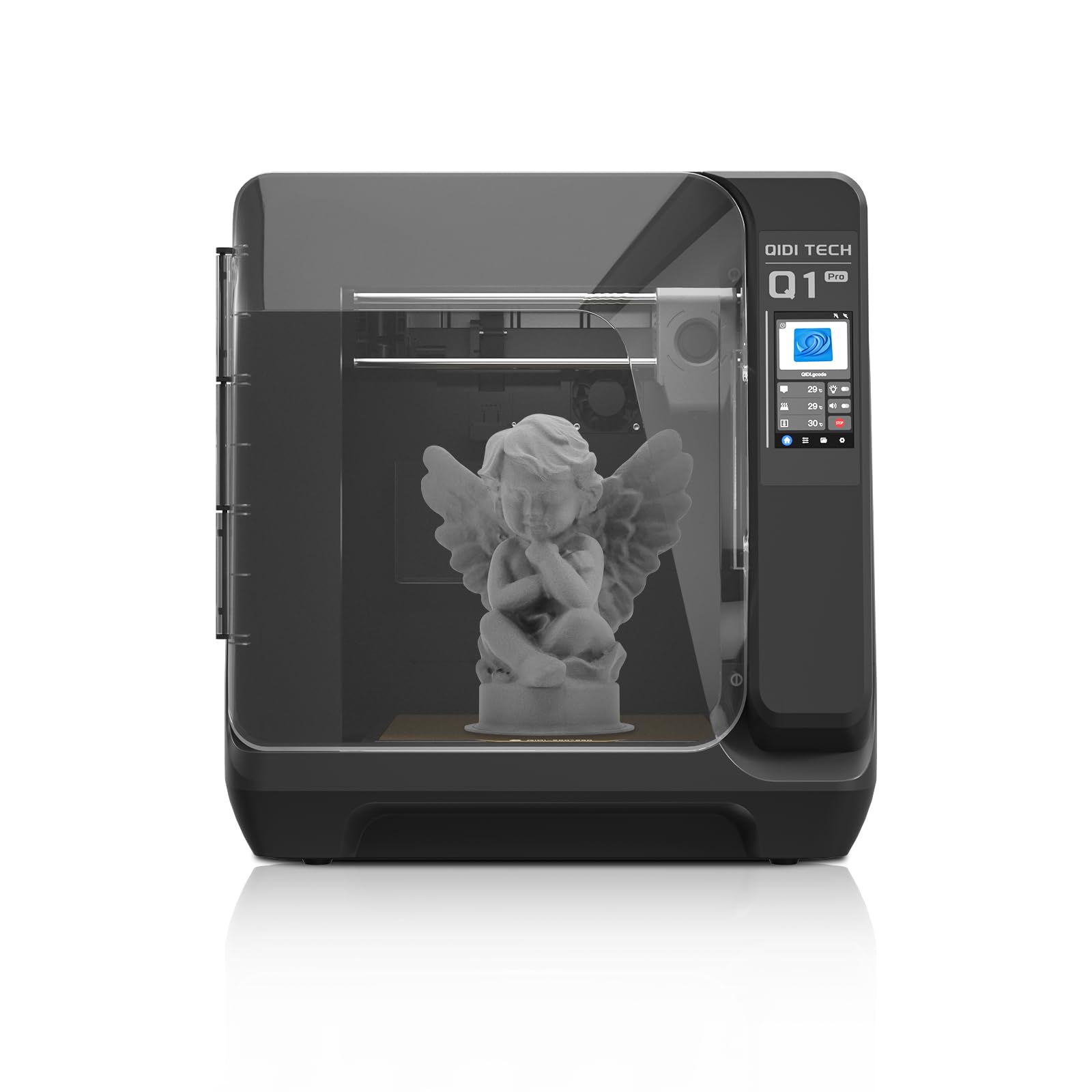Compare Q1 PRO vs Comgrow T300
Comparison between the best 3D printers
Choose the best 3D printer at the best price. The cheapest 3D printers are here.
Buy a 3D printer here with 3D Fila.
 |
 |
|
| Model | Q1 PRO[BUY Q1 PRO] |
Comgrow T300 |
| Printing Material | Filament | Filament |
| Buy Filament for QIDI Q1 PRO | Buy Filament forSovol Comgrow T300 | |
| Estimated price | $449,00 | $449,00 |
| Manufacturer | QIDI | Sovol |
| Release Year | 2024 | 2024 |
| Print Volume [mm] | 245x245x245 | 300x300x350 |
| Printer Size [mm] | 467x477x489 | 503x631x831 |
| Weight [kg] | 20 | 17 |
| Power Loss Recovery | YES | YES |
| Enclosed printer | YES | NO |
| Bed Leveling | Automatic | Automatic |
| Filament End Sensor | YES | YES |
| Bed type | Heated | Heated |
| Power supply system | Direct Drive | Direct Drive |
| Standard nozzle | 0,4 | 0,4 |
| Maximum Nozzle Temperature [°C] | 350 | 300 |
| Maximum Bed Temperature [°C] | 120 | 100 |
| Maximum printing speed [mm/s] | 600 | 600 |
| Filament holder | YES | YES |
| Camera for supervision | YES | YES |
| Recommended filaments | PLA、ABS、ASA、PETG、TPU、PC、PA、PA-CF、PET-CF、PAHT-CF etc. | PLA, PETG, PET, TPU, PA, ASA, PC, PLA CE, PA-CF, PET-CF |
| Recommended slicers | QIDI Slicer/Cura/Simplify 3D/ORCA/PRUSA Slicer | Bambu Studio, Super Slicer, Cura, Prusa Slicer, Orca Slicer |
| Maximum Resolution [mm] | 0,1 | 0,1 |
| Processor | Cortex-A53,64-bit Processor | 64 bit |
| Display | Touchscreen 4,3'' | Touchscreen 5'' |
| Power Supply | 350 W | 150 W |
| Connectivity | WiFi/USB Flash Drive/Ethernet Cable | USB, WiFi |
| Operating systems | Windows, Linux, Macbook | Windows, Linux, Macbook |
| Date of registration in the system | 2024-07-09 | 2024-05-10 |
| Release date | 2024 | 2024 |
| Extra features | The QIDI Q1 Pro 3D printer stands out for its Core XY structure and heating chambers that reach up to 60ºC, ideal for advanced materials such as ABS and Nylon. It features Klipper firmware, an automatic leveling system, a high-flow extruder with a double metal nozzle and a hotend that reaches 350ºC. It offers connectivity via Wi-Fi, USB and Ethernet, as well as a 1080p camera for remote monitoring and an intuitive touchscreen for easy operation. | The Sovol Comgrow T300 printer stands out for its technological innovations and advanced features. With a print size of 300mm300mm350mm, the T300 offers true linear rails on all axes, ensuring greater stability. Its Klipper-based intelligent core and 64-bit microcomputer increase printing speed and quality through pressure advancement and input shaping. The extruder with a gear ratio of 6.5:1 allows for more precise material control, optimizing the printing of flexible materials. In addition, the T300 features a rapid filament cooling system with a high-speed fan and a circular duct piece that improves cooling efficiency. With a 4.3-inch high-refresh rate touchscreen and an 81-point automatic leveling system, the T300 simplifies the preparation and execution of 3D prints. |
| Support for multiple colors and materials (AMS and CFS) | NO | NO |
Notes * |
||
| Cost-benefit | 8 / 10 | 7 / 10 |
| Hardware | 4.8 / 10 | 3.2 / 10 |
| Tela | . | . |
| Print volume | 3 / 10 | 4 / 10 |
| Performance | 5 / 10 | 5 / 10 |
| [BUY Q1 PRO] |
Conclusion |
| In conclusion, both the QIDI Q1 Pro and the Sovol Comgrow T300 are strong contenders in the 3D printing market, each offering a range of features that cater to different user needs. The QIDI Q1 Pro is a robust enclosed printer with advanced heating capabilities, making it ideal for printing a wider variety of materials, including more demanding ones like ABS and Nylon. Its inclusion of a high-flow extruder and double metal nozzle allows for high-temperature printing, which is a significant benefit for users looking to experiment with various filaments. Additionally, it comes equipped with a camera for remote monitoring, enhancing its usability. On the other hand, the Sovol Comgrow T300 offers a larger print volume, which is advantageous for projects requiring bigger dimensions. Its advanced technological features, including true linear rails and a high gear ratio extruder, result in superior print stability and material control. The T300 also provides effective cooling mechanisms that can optimize the quality of prints, particularly when using flexible materials. When considering price, both printers are similarly positioned, providing a competitive entry point for users. While the Q1 Pro excels in heating capabilities and material versatility, the T300 shines in print volume and technological sophistication. Ultimately, the choice between the two will depend on specific printing needs, such as material types, volume requirements, and preferences for enclosed or open-frame designs. Both models score equally in terms of cost-benefit, making it essential for buyers to align their decision with their unique printing goals. |

